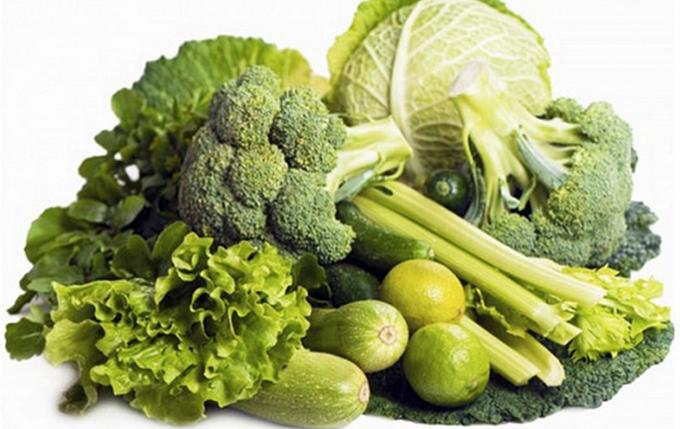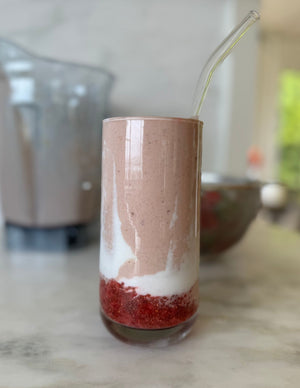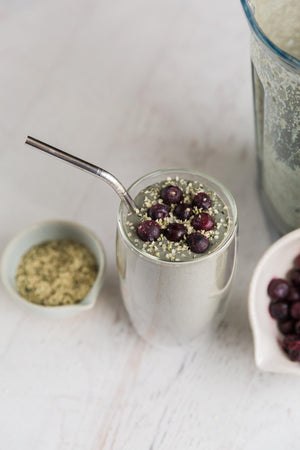
Blood sugar, or glucose, is our main source of energy. It dictates how hungry and energetic we feel. Blood sugar is produced when we breakdown any carbohydrate—from quinoa to cake. The key idea with respect to blood sugar is balance. We feel best and lose fat when our blood sugar is balanced: not too high, not too low. Eating the right amount of protein, fat and fiber at each meal can help you naturally stabilize blood sugar to burn fat and have consistent energy throughout the day. It will also help to keep aggressive insulin spikes at bay. (More on this below.)
Blood Sugar Regulation and Insulin
Our pancreas creates a hormone called insulin that is released into the blood steam to regulate blood sugar. The normal range for blood sugar is between 80mg/ml and 120 mg/ml. Insulin is like a small ferryboat: it picks up blood sugar, then transfers it to our blood stream and into our cells. This regulates and maintains blood sugar levels within the normal range. When we eat sugar (or other carbohydrate-rich foods that are quickly processed into blood sugar), the pancreas goes into overdrive to produce the insulin necessary for all the new blood sugar to be stored. This insulin surge tells our body that plenty of energy is available, and that it should stop burning fat and start storing it.
High and Low Blood Sugar
Low blood sugar (reactive hypoglycemia) occurs when the insulin surge causes too much blood sugar to be transported out of our blood. This can leave us feeling tired, hungry, weak, shaky, lightheaded and anxious. As a result, we crave sugar and carbohydrates, thinking they will pick us back up. In reality, they start the cycle all over again. And, in the process, our body stores more fat. High blood sugar (hyperglycemia) occurs when the insulin is unable to transport enough blood sugar out of our blood.
Healthy Weight Loss
Weight loss happens between meals when we have balanced blood sugar and no excess insulin. Thus, understanding blood sugar is a great way to facilitate long-term healthy fat loss. In addition, it can help keep your metabolism high.
How to Balance Your Blood Sugar
You can naturally balance your blood sugar by avoiding simple carbohydrates and hidden sugar. Instead, eat fat, protein and fiber-rich meals. And don’t starve yourself! Not only does starvation cause the production of stress hormones like cortisol that prevent weight loss, but the resulting low blood sugar causes our body to go into muscle burning, ultimately lowering our metabolism.
Limit Your Simple Carbohydrates
Simple carbohydrates include the various forms of sugar (look for words ending in “ose”), such as sucrose (table sugar), fructose (fruit sugar), lactose (dairy sugar) and glucose (blood sugar). They can be metabolized quickly and are therefore most likely to cause an insulin surge. This is why it’s possible to be hungrier after you drink a 100% fruit smoothie than an egg omelet—the subsequent fructose crash will have you craving and eating more throughout the day. Monitor how you respond to simple carbohydrates and add fat or fiber to your snack or meal to decrease spikes and crashes.
Watch Out for Hidden Sugar
It can be frustrating to clean up your diet and not see results. “Hidden” sugar can be everywhere and may be the culprit. Check the nutrition information on everything you buy and eat.
Processed Foods: There may be sugar in processed foods like bread, ketchup, salad dressing, canned fruit, applesauce, peanut butter and soups.
Beverages: Sugar can also be present in beverages, especially coffee and alcohol and liquid sugar creates the fastest insulin surge.
Fat Free Foods: Sugar is often used to replace the flavor that is lost when the fat is removed.
Juices: Watch out for 100% fruit products that contain concentrated fruit juice or fructose. Juicing your way through the holidays really just means a liver full of fructose and muscle loss. (Fructose is 100% metabolized in the liver.)
How to Stabilize Your Blood Sugar and Flatten Your Waistline
The easiest way to stabilize blood sugar within the normal range is to eat fat, protein, fiber and greens at each meal. At beWellbyKelly, we call this eating the #fab4.
Fat: Fat has less impact on blood sugar than carbohydrates. When consumed alone, fats have no effect on circulating blood sugar. When eaten with a meal, fat slows the absorption of your meal, which helps you to avoid steep spikes. (This explains the surge in high-fat, low-carb diets, like ketosis.)
Protein: Protein keeps blood sugar levels steady. When consumed alone, protein does not generate a rise in blood sugar. However, do not eat protein in excess, otherwise it may be converted into glucose (gluconeogenesis).
Fiber: Like fat, fiber slows the absorption of nutrients, specifically glucose. Natural sugars found in vegetables and fruit are delivered to us in a fiber “package” to slow the absorption of sugar. Vegetables and fruit are best eaten in their whole state.
Greens: By adding greens or deep colored vegetables, you’re adding vitamins and minerals to your diet. Another bonus: magnesium found in green vegetables has been proven to increase insulin sensitivity, which is good for regulating blood sugar.
Eating the #fab4
Aim to eat 25-35 grams of protein per meal, paired with 2 tbsp. of fat. These metrics will help you avoid snacking and bridge from one meal to the next without a dip in blood sugar. Also, eat fibrous green vegetables that keep you full and satiated, such as broccoli, asparagus or mixed greens. Another key is to eat! Don’t starve yourself. Trying to eat less and lose weight only works in the short-term and does more damage to your metabolism. Instead of a mini-salad with a tiny portion of protein, go for a grass-fed buffalo burger lettuce wrapped with avocado. At beWELL, it isn’t about avoiding meals or eating less. Instead, we simply focus on what to eat and ensure each meal contains the #fab4.
Be Well. Be Beautiful. Be YOU!
Xo KL
@bewellbykelly








